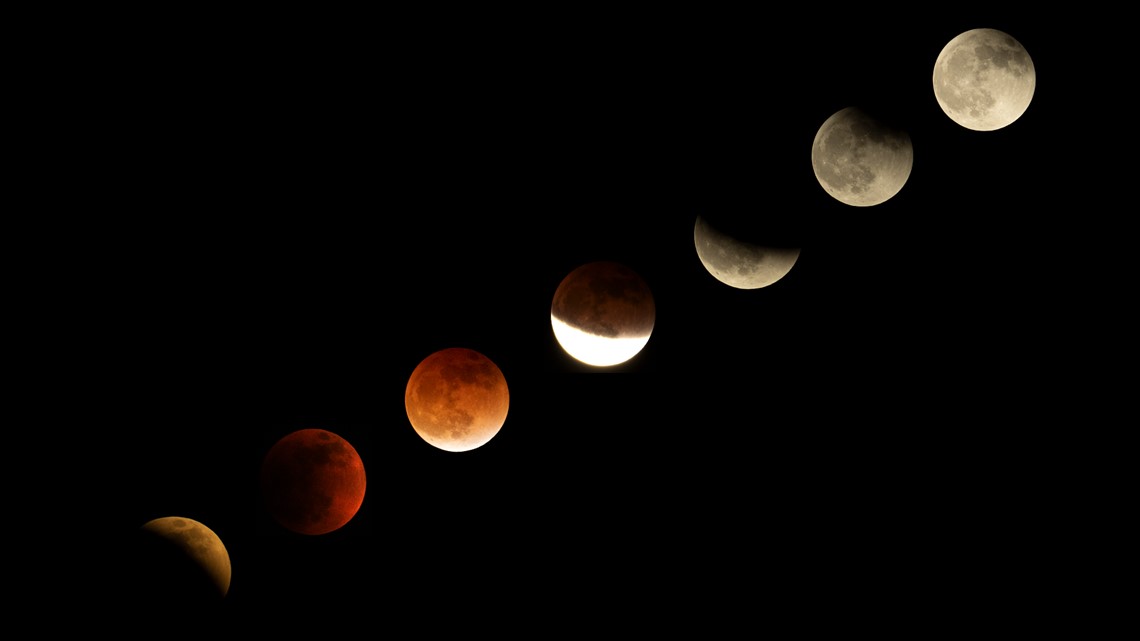Look up in the early hours of Tuesday morning — you may get to see the last total lunar eclipse for a few years.
Lunar eclipses, also known as 'blood moons,' happen when the sun, Earth and moon line up so the moon passes into Earth's shadow. The moon appears to take on a dramatic reddish hue, hence the totally-not-ominous name.
The next total lunar eclipse is in March 2025, though there will be several partial ones before then.
Where can you see the blood moon?
NASA says weather permitting, the eclipse will be visible across North and Central America, and in parts of Asia, Australia and South America. Basically, if the moon is above the horizon for you during the eclipse, you'll see it.
If the weather doesn't cooperate, there are numerous online livestreams of the eclipse. Here's one from Arizona's Lowell Observatory.
When will it happen?
You'll need to get up early on Tuesday, Nov. 8 to see the lunar eclipse (or stay up very late). Yep, Election Day. NASA says totality begins at 5:17 a.m. EST — that's 4:17 a.m. CST, 3:17 a.m. MST and 2:17 a.m. PST.
Totality lasts for about an hour and a half. You'll be able to see a partial eclipse for about an hour before it starts and after it ends. The moon will set for East Coast observers while still partially eclipsed, but West Coast viewers have a chance to see the entire thing unfold.
Do I need binoculars?
You don't need special equipment to see the eclipse, though binoculars or telescopes will give you a better view. They also might give you the opportunity to see something else in the night sky.
"During this eclipse, viewers with binoculars can spy an extra treat – the ice giant planet Uranus will be visible just a finger's width away from the eclipsed Moon," NASA's skywatching blog says.


With or without binoculars, the dulling of the moon's reflection will make faint stars in the sky appear brighter. As always, it's best to watch from somewhere away from bright city lights.
Why does the moon look red?
For the same reason our sky looks blue. NASA says thanks to its longer wavelength, red light is harder for Earth's atmosphere to scatter than blue light. During a lunar eclipse, only red light manages to shine all the way through Earth's atmosphere and reflect off the moon's surface. It'll look even redder if there's a lot of dust and clouds in the air.
"It’s as if all the world’s sunrises and sunsets are projected onto the Moon," a NASA description says.

